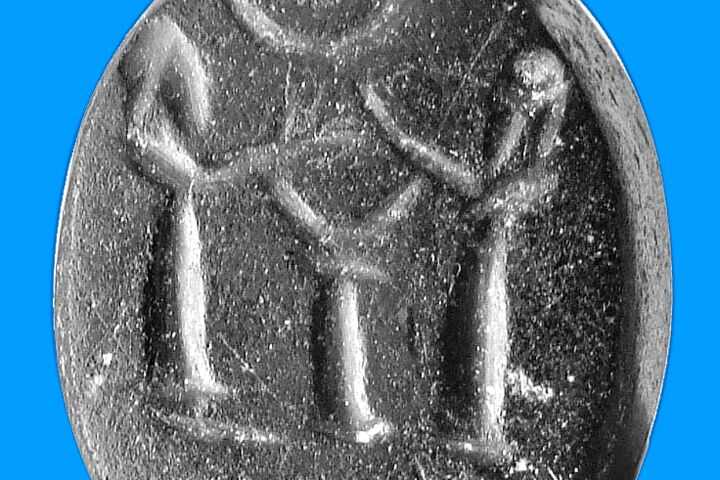
Mazar Revises Her Reading of Seal Inscription
A black stone seal found in Jerusalem in mid-January is inscribed with a different Hebrew name than previously thought. Archaeologist Eilat Mazar revised her analysis recently in Biblical Archaeology Review (bar):
I accept the suggestion made by Peter van der Veen and followed by many other scholars to read Sh-l-m-t. Actually, I love it. For the time being, this reading is preferable to my reading of t-m-h or h-m-t. This is an opportunity also to thank the many scholars who took part in the various blogs contributing their knowledge on the subject.
Soon after the original announcement, which we reported on here, Peter van der Veen suggested that Mazar read the inscription the wrong way. According tobar,
He and other critics suggested that the seal actually bears four letters (shin, lamed, mem and tav) and that the correct reading is “Shlomit,” which itself may be a name mentioned in the Bible. Mazar has now acknowledged that the seal should indeed be read as “Shlomit.” Her comments and those of two of her critics can be found here; we invite other experts to share their viewpoints with us.
If the new reading is correct, Baptist Presssays, “scholars believe it could refer to Shelomith, a man mentioned in Ezra 8:10 who also returned from Babylon to Jerusalem, or to Shelomith, the daughter of Zerubbabel mentioned in 1 Chronicles 3:19.”
The seal, which Dr. Mazar described as “magnificent,” is elliptical, measuring only 2.1 by 1.8 centimeters. On the surface is an engraved scene of two bearded priests standing on either side of an incense altar with their hands raised forward in a position of worship. On top of the altar appears a crescent moon, the symbol of the god Sin, the chief Babylonian god. Under this scene is the Hebrew inscription.
